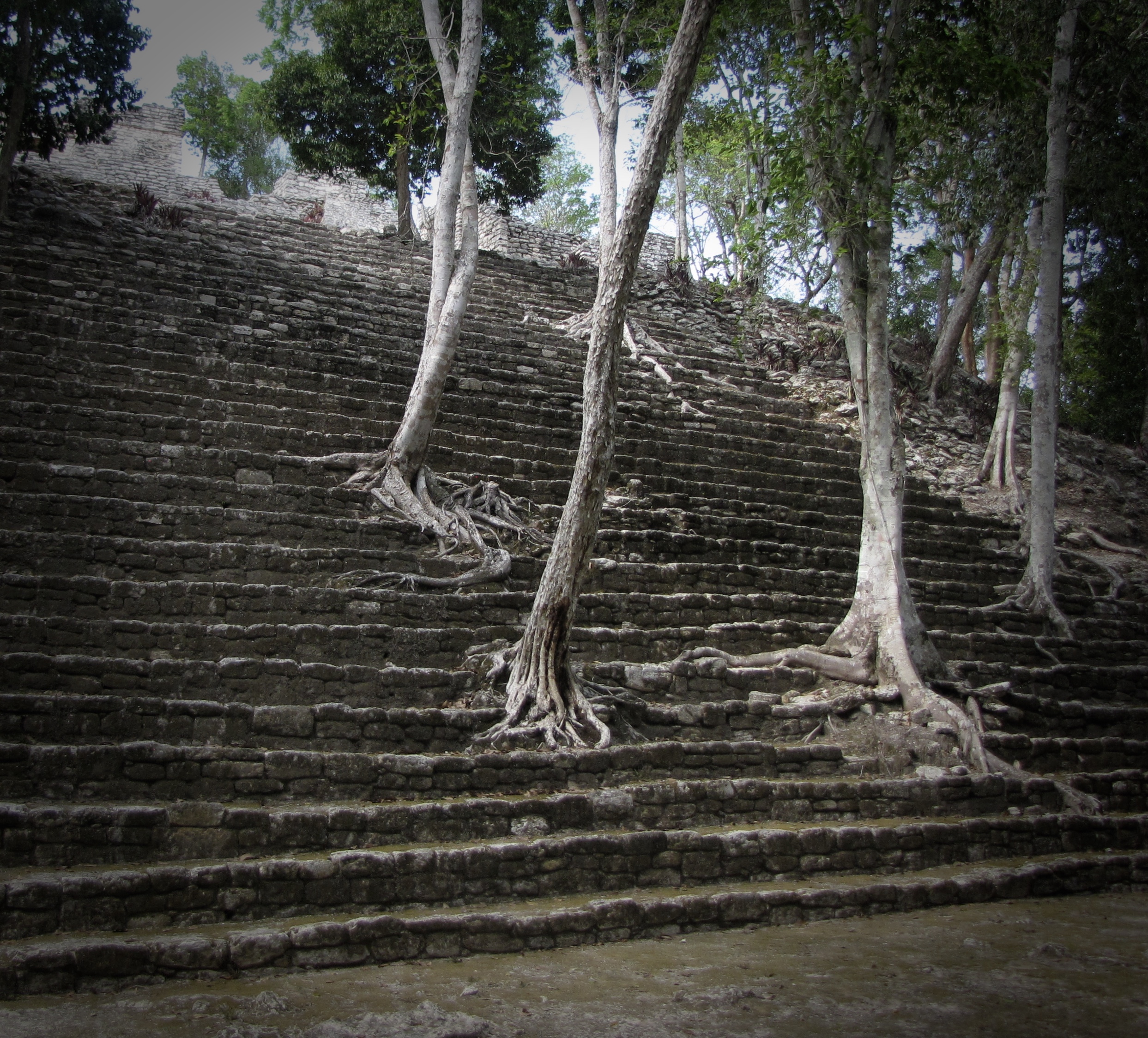The ancient Maya city of Dzibanché and smaller satellite site of Kinichna sit at the bottom of Quintana Roo on the southeastern corner of Mexico’s Yucatán Peninsula. Dzibanché’s historical claim to fame rests on its identity as the first home of the Kan (or Kaan) dynasty, whose emblem glyph, dated at 495 CE, appears in its earliest known form at the site. About 100 years after they marked the city with this glyph, the Kan moved 80 miles southwest, deep into the jungle, to settle in the soon-to-be-massive city of Calakmul. From there, the Kan built one of the largest empires of the Maya world, spanning, at its peak, around 13,000 square km. The city itself encompassed a population of about 50,000 people. Even after the Kan left, however, Dzibanché lived on until about 990 CE, aided by the fertile seasonal swampland surrounding it.
Although some of the site was under excavation and off-limits to visitors during our visit in 2015, Dzibanché still rewarded those willing to wander and explore its open areas. In addition to the more obvious pyramids and central structures, which boast rare remains of painted stucco decoration, the city also includes raised complexes of smaller, stacked structures unlike any we encountered elsewhere. But Dzibanché’s greatest charm rests in its ruins’ relationships with nature, particularly the great ceiba trees growing between, and tearing through, the remaining stone.
Kinichna is located a couple kilometers from Dzibanché, and once joined the larger site by a way of a sacbe (raised road). For tourists, the ruins consist primarily of a single pyramid, although a number of smaller, unexcavated structures also dot the area. Because of its small size, close proximity, and direct connection to Dzibanché, it was probably either a small settlement included under Dzibanché’s rule or an extension of Dzibanché itself, perhaps as a kind of wealthy, northern suburb.
Kinichna shares its sister-site’s picturesque struggle with nature. Its first major highlight is the giant ceiba tree abutting the parking lot, whose mass of above-ground roots sprouts from and supports its diagonal trunk.














